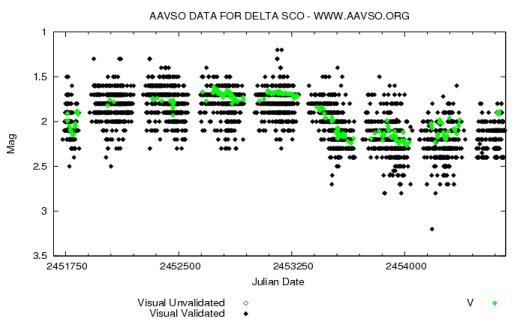
 |
The visual light curve of Dschubba, Delta Scorpii, is plotted against Julian Date. JD 2451750 is July 24, 2000, JD 2454000 September 21, 2006. The black points are visual estimates, the green ones photoelectric measures. Delta Sco began erupting in 2000, climbed to near first magnitude as it developed a surrounding disk, and has not yet returned to normal. Courtesy of the American Association of Variable Star Observers (AAVSO). |